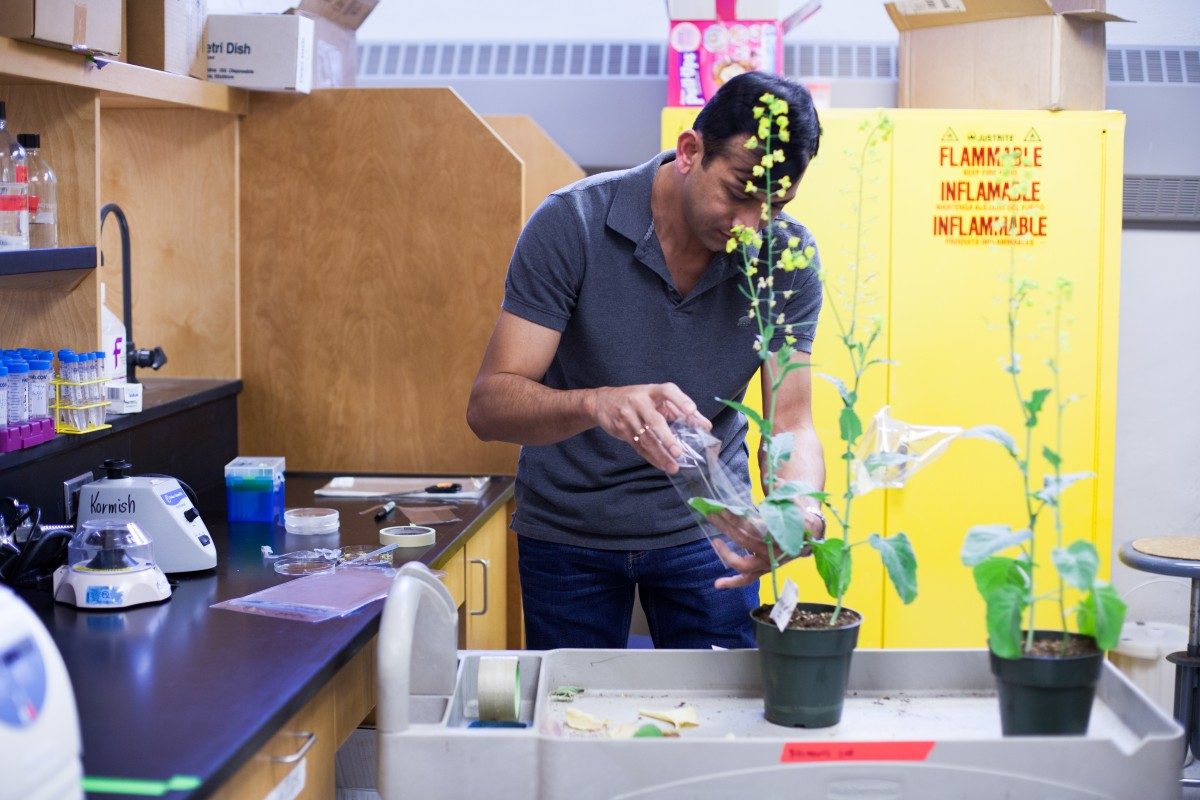
Photo credit: Kira Koop
Species-specific crop protection
RNA interference provides a new method of pest control, using tools so precise they hit only the target insect or disease
Country Guide Canada – March 22, 2018
“We like to call sclerotinia the bully,” says Mark Belmonte. And stopping a bully is not easy. The pathogen attacks fast, it moves quickly through the plant and it can do heavy yield damage right away.
“Because it acts with brute force and involves multiple genes, sclerotinia is difficult to study and get a good understanding for control,” says Belmonte, researcher and associate professor at the University of Manitoba. “Sclerotinia is a complex infection that is good at eluding current fungicides, so we have to be more creative.”
Belmonte’s lab focuses on developing new crop-protection tools using big data and next-generation genetic sequencing. He’s working on one particular method that will provide new solutions: RNA interference (RNAi).
Using algorithms
For his sclerotinia work, Belmonte profiles the genes expressed in the fungus and the response-genes activated within canola plants at the time of infection. “We have literally trillions of data points,” he says, “but within that huge haystack are needles that will work as targets for RNAi.”
It takes a certain amount of luck to find potential targets, but Belmonte and his team use algorithms to predict where the targets are within those numerous data points. It works.

Dr. Mark Belmonte, Biological Sciences. Photo credit: Kira Koop.
So now what?
There are two choices. One, the RNAi molecule can be made into a foliar spray. Or two, a gene can be introduced into canola so the plant makes the RNAi molecule itself, using it to stop the fungus when it infects.
With a transgenic trait, the plant expresses the trait all the time so it’s ready to go when sclerotinia infects. That means no timing issues or “should I spray?” questions that farmers face every year with any foliar fungicide to prevent sclerotinia stem rot. A key disadvantage is the regulatory approval required to grow and sell a transgenic trait.






